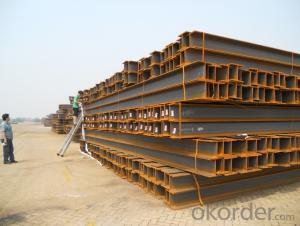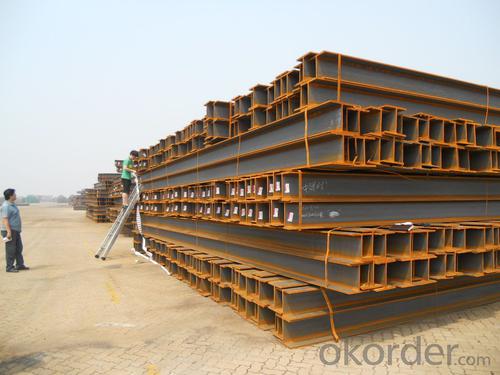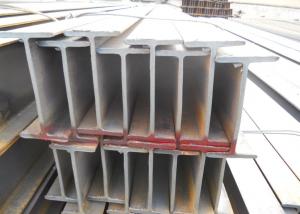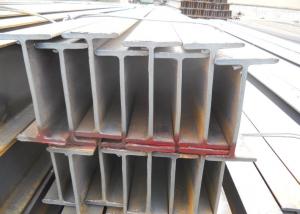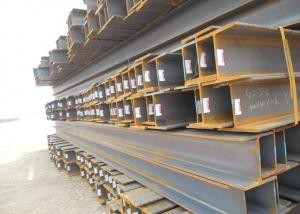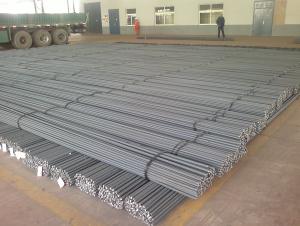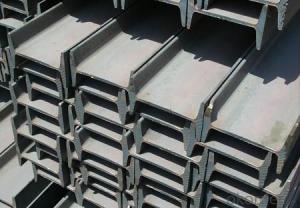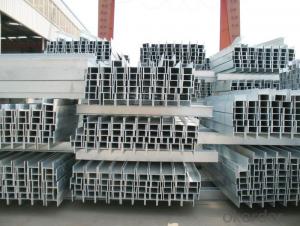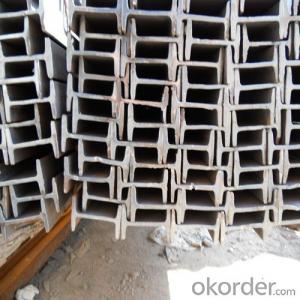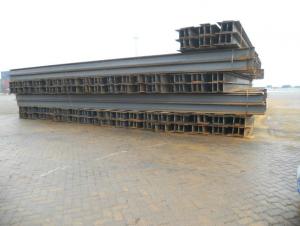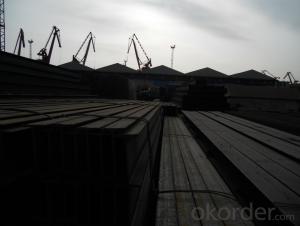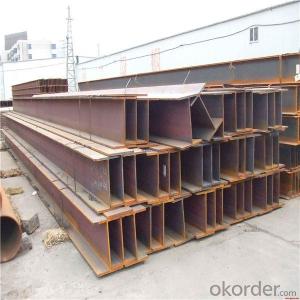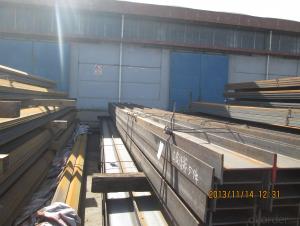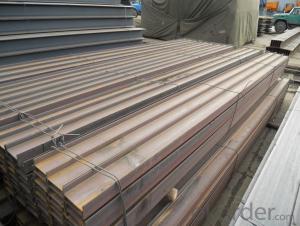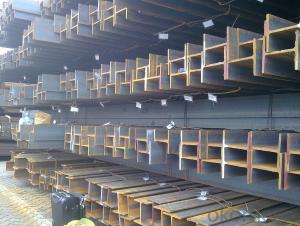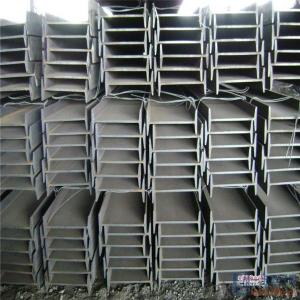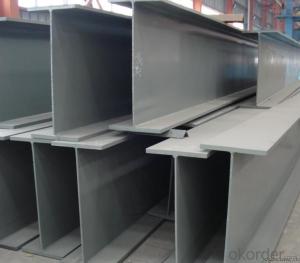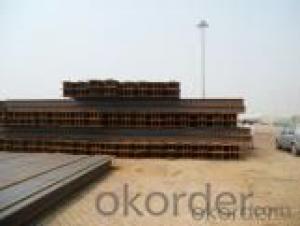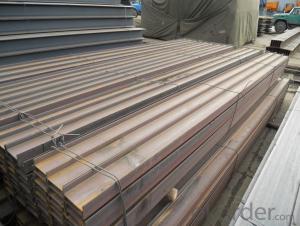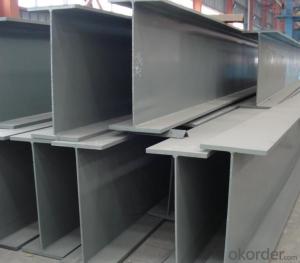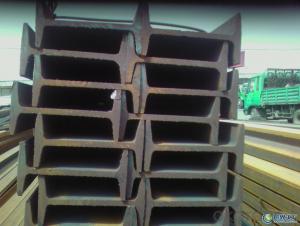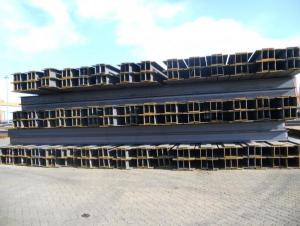H Beam with Good Quality and Competitive Prices Made in China for Sale
- Loading Port:
- Tianjin
- Payment Terms:
- TT OR LC
- Min Order Qty:
- 25 m.t.
- Supply Capability:
- 20000 m.t./month
OKorder Service Pledge
OKorder Financial Service
You Might Also Like
Specification
Product Description:
OKorder is offering H Beam with Good Quality and Competitive Prices Made in China for Sale at great prices with worldwide shipping. Our supplier is a world-class manufacturer of steel, with our products utilized the world over. OKorder annually supplies products to European, North American and Asian markets. We provide quotations within 24 hours of receiving an inquiry and guarantee competitive prices.
Product Applications:
H Beam with Good Quality and Competitive Prices Made in China for Sale are ideal for structural applications and are widely used in the construction of buildings and bridges, and the manufacturing, petrochemical, and transportation industries.
Packaging & Delivery:
Packaging Detail: products are packed in bundle and then shipped by container or bulk vessel, deformed bar is usually naked strapping delivery, when storing, please pay attention to moisture proof. The performance of rust will produce adverse effect.
Each bundle weight: 2-3MT, or as required
Payment term: TT or L/C
Delivery Detail: within 45 days after received advanced payment or LC.
Label: to be specified by customer, generally, each bundle has 1-2 labels
Trade terms: FOB, CFR, CIF
FAQ:
Q1: Why buy Materials & Equipment from OKorder.com?
A1: All products offered byOKorder.com are carefully selected from China's most reliable manufacturing enterprises. Through its ISO certifications, OKorder.com adheres to the highest standards and a commitment to supply chain safety and customer satisfaction.
Q2: How soon can we receive the product after purchase?
A2: Within three days of placing an order, we will begin production. The specific shipping date is dependent upon international and government factors, but is typically 7 to 10 workdays.
Q3: How do we guarantee the quality of our products?
A3: We have established an advanced quality management system which conducts strict quality tests at every step, from raw materials to the final product. At the same time, we provide extensive follow-up service assurances as required.
Images:
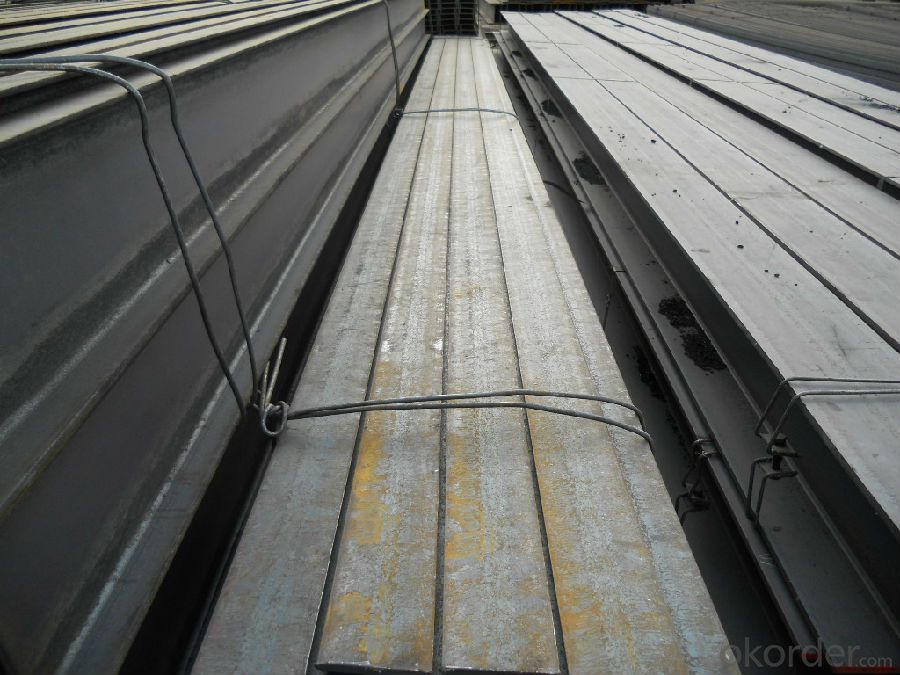
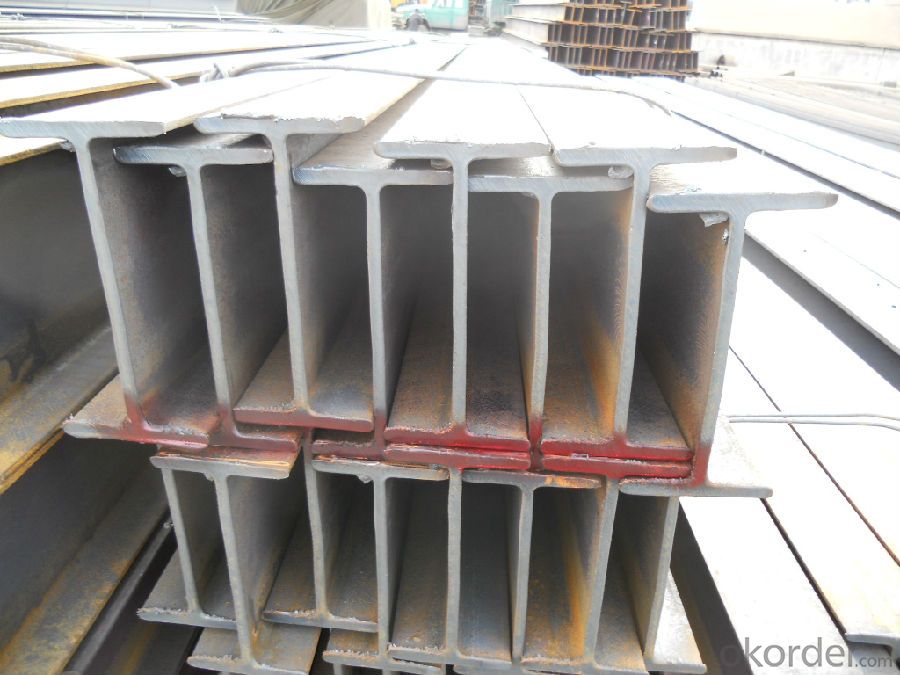
- Q: How are steel H-beams installed on construction sites?
- Steel H-beams are commonly used in construction sites for their strength and durability. The installation process of these beams involves several steps to ensure their proper placement and stability. Firstly, the construction site must be prepared for the installation of the steel H-beams. This includes clearing the area of any debris, leveling the ground, and ensuring that the foundation is strong enough to support the weight of the beams. Once the site is prepared, the beams are typically delivered to the construction site in sections. These sections are then lifted into position using cranes or other heavy machinery. The beams are carefully aligned and placed on temporary supports, known as cribbing, to hold them in place during the installation process. Next, the beams are bolted together at the connection points. This ensures that they form a solid and secure structure. Welding may also be used to reinforce the connections and increase their strength. After the beams are connected, they are adjusted into the desired position using hydraulic jacks or other lifting equipment. This ensures that the beams are level and properly aligned with the rest of the structure. Once the beams are in their final position, they are permanently secured to the foundation or supporting structure using bolts or welding. This ensures that they are stable and will not shift or move over time. Finally, the temporary supports, or cribbing, can be removed once the beams are securely in place. This allows for the completion of other construction tasks, such as the installation of flooring or walls. Overall, the installation of steel H-beams on construction sites requires careful planning, coordination, and the use of appropriate machinery. It is important to follow industry guidelines and standards to ensure the structural integrity and safety of the building.
- Q: Are steel H-beams compatible with different types of roofing materials?
- Different types of roofing materials can be used with steel H-beams. When it comes to construction, steel H-beams are commonly employed to offer structural support for roofs and other load-bearing purposes. These beams are designed to be adaptable, accommodating a wide variety of roofing materials such as metal, asphalt shingles, clay tiles, slate, and concrete. The strength and durability of steel H-beams make them appropriate for supporting the weight of various roofing materials, ensuring a stable and secure structure. Furthermore, steel H-beams are easily customized and adjusted to fit different roof designs and configurations, giving flexibility in choosing the most suitable roofing material for a specific project. In summary, steel H-beams provide a reliable and compatible option for supporting different types of roofing materials in construction.
- Q: Can steel H-beams be used in railway or subway construction?
- Yes, steel H-beams can definitely be used in railway or subway construction. H-beams, also known as I-beams, are widely used in the construction industry due to their strength and durability. They are commonly used as load-bearing components in various structures, including bridges, buildings, and railway or subway tracks. In railway or subway construction, steel H-beams are typically used as support beams for elevated tracks or platforms. These beams provide the necessary structural integrity and stability to carry the weight of trains and passengers. They are designed to withstand heavy loads and high pressure, ensuring the safety and reliability of the railway or subway system. Steel H-beams offer several advantages for railway or subway construction. Firstly, they have a high strength-to-weight ratio, meaning they can support heavy loads while being relatively lightweight themselves. This is crucial in railway or subway construction, as it allows for the efficient use of materials and reduces the overall weight of the structure. Additionally, steel H-beams are resistant to deformation and corrosion, making them suitable for long-term use in outdoor and underground environments. They can withstand the harsh conditions associated with railway or subway systems, such as exposure to weather, vibrations, and moisture. Furthermore, steel H-beams are readily available and cost-effective, making them a preferred choice for construction projects. They can be easily manufactured, transported, and installed, saving time and resources during the construction process. In conclusion, steel H-beams are commonly used in railway or subway construction due to their strength, durability, and cost-effectiveness. They provide the necessary support and stability for elevated tracks or platforms, ensuring the safety and reliability of the transportation system.
- Q: Are steel H-beams suitable for structures with curved elements?
- No, steel H-beams are typically not suitable for structures with curved elements. They are designed to provide rigid support and stability in straight structures, and their shape does not lend well to accommodating curved elements.
- Q: Can steel H-beams be used in wastewater treatment plants?
- Yes, steel H-beams can be used in wastewater treatment plants. Steel H-beams offer excellent strength and durability, making them suitable for various structural applications in wastewater treatment plants. They can be used for supporting heavy equipment and machinery, constructing platforms and walkways, and providing structural support for various treatment processes. Additionally, steel H-beams are resistant to corrosion, which is essential in an environment with high levels of moisture and chemicals. With proper coatings and maintenance, steel H-beams can provide long-lasting and reliable support in wastewater treatment plants.
- Q: What are the different design codes for steel H-beams?
- The different design codes for steel H-beams include the American Institute of Steel Construction (AISC) code, European Standard (EN) code, Japanese Industrial Standards (JIS) code, and the British Standards (BS) code. These codes provide guidelines and specifications for the design, fabrication, and use of steel H-beams in various structural applications.
- Q: Hot rolled H section steel
- H steel is a new type of economical construction steel. H type steel cross section shape is reasonable in economy, good mechanical properties, rolling each point on the extended section is uniform, small internal stress, compared with the ordinary beam, a section modulus, light weight, saving advantages of metal, can make the building structure to reduce 30-40%; and because of its inner and outer legs parallel leg end is right, assembled into components, welding, riveting work can save up to 25%. Often used in large capacity requirements, large cross section stability, such as buildings, high-rise buildings, as well as bridges, ships, lifting transport machinery, equipment foundation, support, foundation piles.
- Q: What are the different types of steel used for manufacturing H-beams?
- There are several different types of steel that are commonly used for manufacturing H-beams. The selection of the steel type depends on various factors such as the required strength, durability, and cost-effectiveness for the specific application. 1. Carbon Steel: This is the most common type of steel used in H-beam manufacturing. It contains mostly iron and carbon, with small amounts of other elements. Carbon steel is known for its high strength and affordability, making it a popular choice for a wide range of applications. 2. Alloy Steel: Alloy steel is a type of steel that contains additional alloying elements such as chromium, nickel, or molybdenum. These elements enhance the steel's strength, hardness, and resistance to corrosion. Alloy steel H-beams are frequently used in heavy-duty construction projects or applications that require exceptional strength. 3. Stainless Steel: Stainless steel is a type of steel that contains a minimum of 10.5% chromium, which gives it excellent resistance to corrosion and staining. H-beams made from stainless steel are commonly used in applications where hygiene, durability, and aesthetic appeal are critical, such as in the food industry or architectural structures. 4. High-strength Low-alloy (HSLA) Steel: HSLA steel is a type of steel that provides high strength and improved toughness compared to standard carbon steel. It often contains small amounts of alloying elements such as vanadium, niobium, or titanium, which enhance its mechanical properties. HSLA steel H-beams are commonly used in applications that require high strength-to-weight ratio, such as bridges or heavy machinery. 5. Weathering Steel: Weathering steel, also known as Corten steel, is a type of steel that develops a protective layer of rust when exposed to the elements. This layer acts as a barrier against further corrosion and eliminates the need for painting or maintenance. Weathering steel H-beams are often utilized in outdoor structures like bridges or sculptures. It is essential to select the appropriate type of steel for manufacturing H-beams based on the specific requirements of the project, considering factors such as strength, durability, corrosion resistance, and cost-effectiveness.
- Q: How do steel H-beams contribute to the overall energy efficiency of a building?
- Steel H-beams contribute to the overall energy efficiency of a building by providing structural support, allowing for larger open spaces and the use of fewer columns. This design flexibility reduces the need for excessive heating and cooling systems, as well as lighting, resulting in reduced energy consumption and improved efficiency.
- Q: Are steel H-beams suitable for manufacturing plants?
- Yes, steel H-beams are suitable for manufacturing plants. They are commonly used in the construction of industrial buildings and manufacturing facilities due to their structural strength, durability, and ability to support heavy loads. Steel H-beams provide stability and can withstand the rigorous demands of manufacturing processes, making them a reliable choice for such applications.
Send your message to us
H Beam with Good Quality and Competitive Prices Made in China for Sale
- Loading Port:
- Tianjin
- Payment Terms:
- TT OR LC
- Min Order Qty:
- 25 m.t.
- Supply Capability:
- 20000 m.t./month
OKorder Service Pledge
OKorder Financial Service
Similar products
Hot products
Hot Searches
Related keywords
